Since dogs became man’s best friend, they have been hard workers, loving companions, and even courageous heroes. The Irish wolfhound exhibits all these traits and has an interesting history that explains why. Since they became a popular breed, they have filled many different roles and have thus been bred to accentuate traits important to those roles. This article will explore the history of the Irish wolfhound and discover how their past jobs have shaped the beautiful dogs we know and love today. So, what were Irish wolfhounds bred for? Let’s find out!
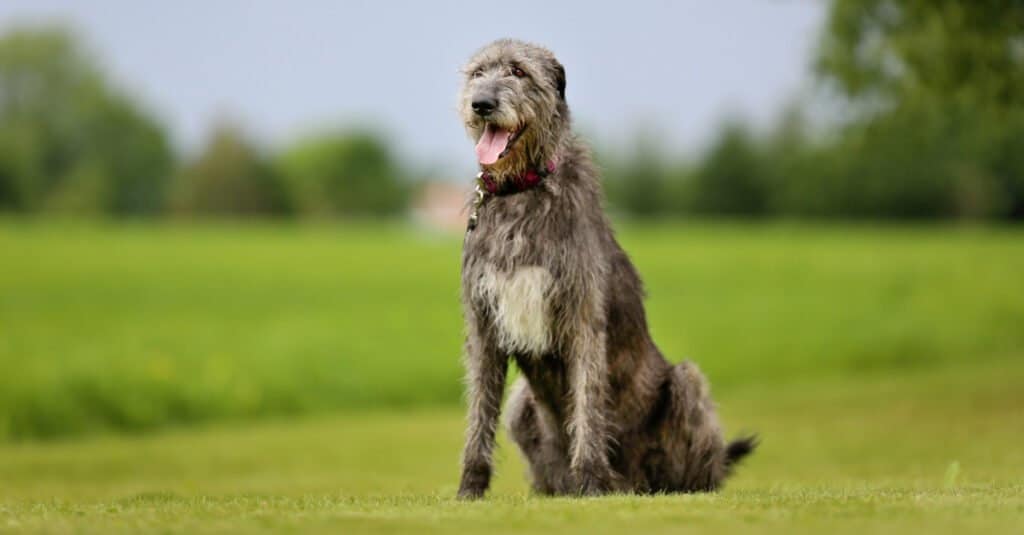
The Irish Wolfhound was originally bred as a big-game hunter.
©iStock.com/Bigandt_Photography
History of Dog Domestication
Domestication
Domestic dogs are descendants of a now-extinct population of wolves. They are therefore close relatives of the modern gray wolf species, Canis lupus. Some scientists propose that gray wolves and domestic dogs are the same species but different subspecies. Under this school of thought, domestic dogs are classified as Canis lupus familiaris. Other subspecies of wolves include the Arctic wolf, Eurasian wolf, eastern wolf, northwestern wolf, and several more living and extinct subspecies. In total, there are 38 subspecies of wolves either living or extinct.

Dogs are incredibly diverse due to their long history of breeding.
©iStock.com/Eriklam
The domestic dog was the first animal humans ever tamed and employed to perform various tasks. Domestication occurred between 20,000 and 40,000 years ago – much earlier than horses, which were domesticated only 6,000 years ago. When dogs were domesticated, they were selectively bred to enhance favorable traits. Different traits made them particularly suited for specialized roles and allowed different breeds to assist humans in a multitude of ways. The tremendous diversity of dog breeds we see today is the result of this long history of breeding.
Early Roles
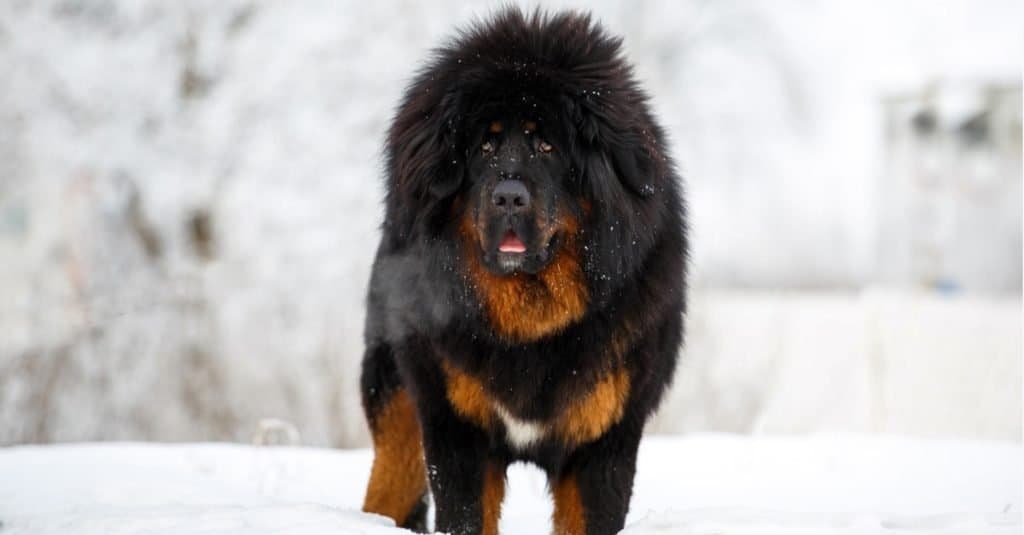
The Tibetan mastiff has served as a guard dog throughout history and continues to do so today.
©Tatyana Kuznetsova/Shutterstock.com
The domestic dog’s earliest jobs were guarding and herding. Guard dogs were important for protecting land, livestock, and people. Chow chows, for example, are a basal breed meaning they were bred far earlier than most modern dog breeds. Their original role was as guard dogs, but they also served humans as hunting and sled dogs. Another notable guard dog is the mastiff. The Tibetan mastiff was used by tribes in Tibet to protect livestock from bears and wolves. Herding dogs became increasingly important later with the development of cattle breeding.
Irish Wolfhounds
Characteristics
The Irish wolfhound is one of the largest dog breeds and typically weighs between 105 and 120 pounds. They stand 32 to 34 inches high at the withers, have long bodies, and have proportionally thick necks. Their coat is wiry, rough, and typically black, fawn, gray, or white in color. Like many large dog breeds, they have a relatively short life expectancy of 6 to 8 years. For comparison, the Australian cattle dog typically lives for 15 years. The oldest dog ever, Bluey, was a 29-year-old Australian cattle dog.
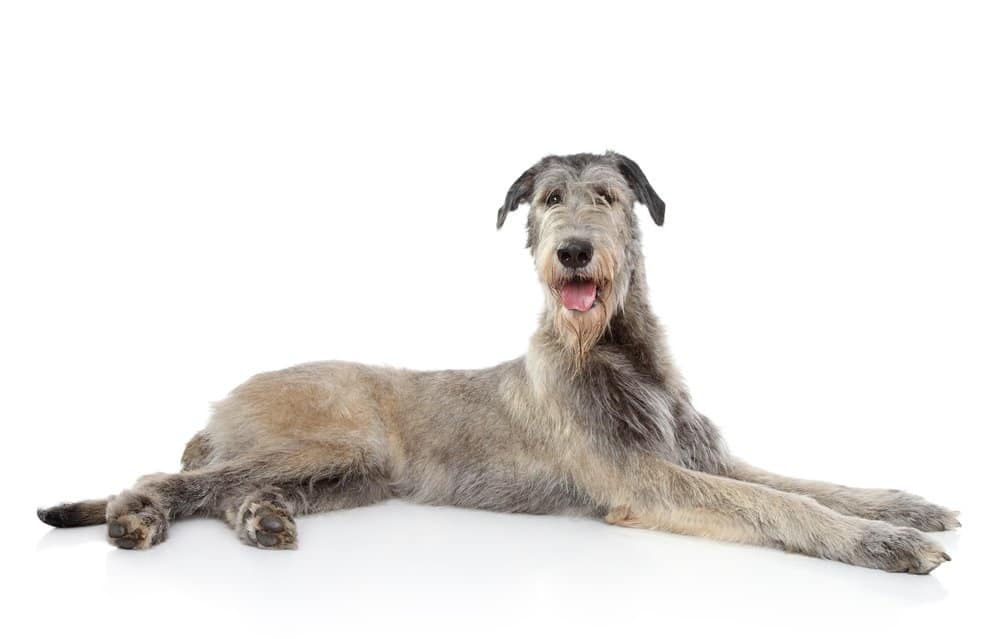
The Irish wolfhound was bred to be very large and is one of the largest breeds of dog alive today.
©Jagodka/Shutterstock.com
Irish wolfhounds have a calm temperament and typically have individual quirky personalities. The breed is very independent, intelligent, loyal, and courageous due to its breeding history. They are quiet by nature and are often introverts. They do, however, get along well with people and other dogs. The historical saying that perfectly describes the Irish wolfhound is “gentle when stroked, fierce when provoked”.
Breeding History
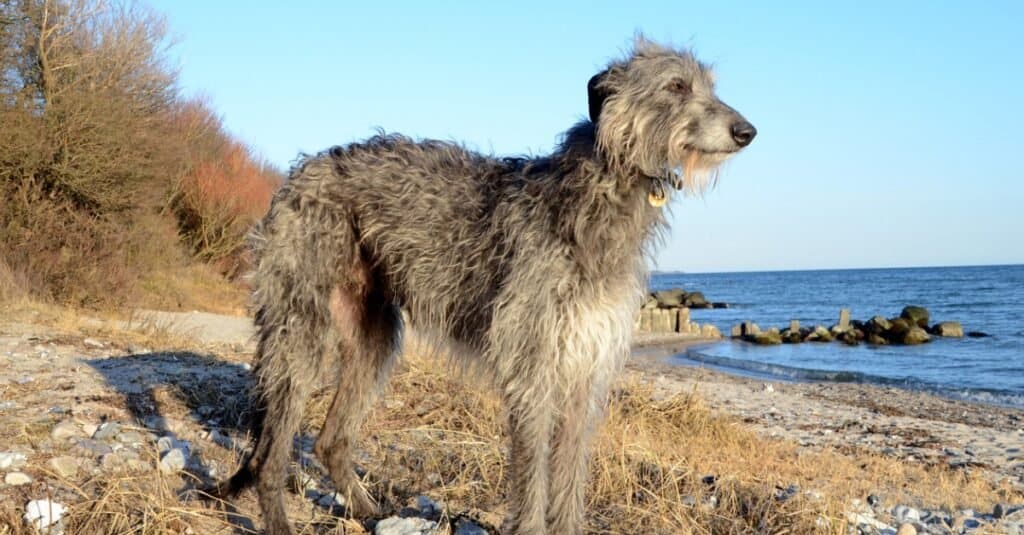
The Scottish deerhound is the progenitor of the Irish wolfhound.
©iStock.com/nemoris
The breeding of Irish wolfhounds began in England in the late nineteenth century. The goal of breeders was to replicate the old wolfhounds of Ireland, which had become extinct. The primary initiator in creating this breed was Captain George Augustus Graham of Gloucestershire. Graham first crossed a Scottish deerhound with a Great Dane. It was then bred with a borzoi, a skilled wolf-hunting dog. The Irish wolfhound was first recognized as a breed in 1879. Graham and other breeders established the Irish Wolfhound Club in 1885 and defined the “Breed Standard”- the standard that people should strive for when breeding these dogs. In 1902, the Irish wolfhound became the mascot of the Irish Guard.
Original Role
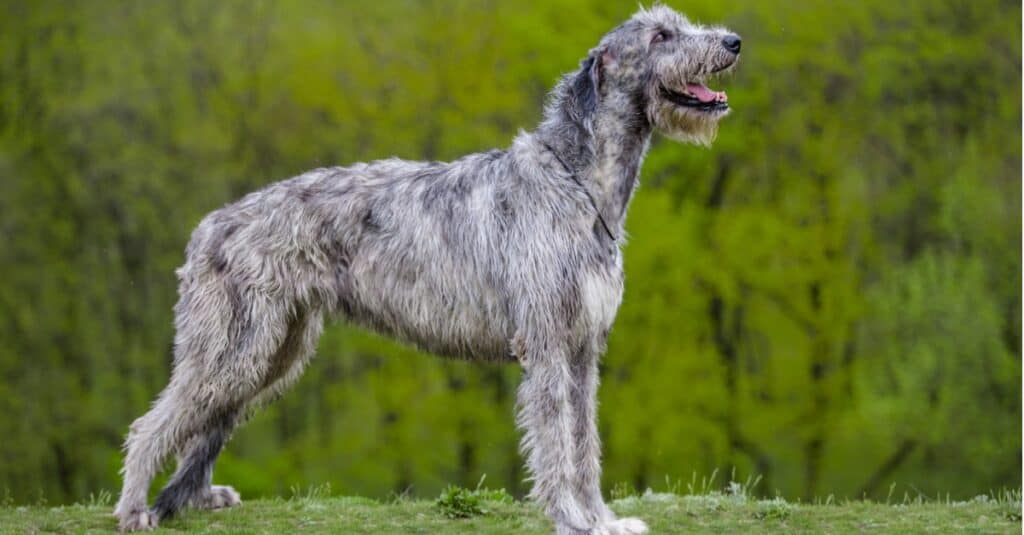
The Irish wolfhound’s size makes it uniquely suited for hunting large animals.
©iStock.com/Ashva
Irish wolfhounds were originally bred to be hunting dogs. Specifically, they were bred to chase down large animals, including wolves. These dogs are sighthounds, which means they hunt primarily with sight and speed rather than smell and endurance. As such, traits like size, speed, visual acuity, loyalty, and courage were very important while Captain Graham was creating this breed. Irish wolfhounds were bred to be very independent and while they do obey commands, they were historically required to hunt independently far away from their masters without detailed commands. As a result of their independent nature, they typically make poor guard dogs.
Irish Wolfhounds Today
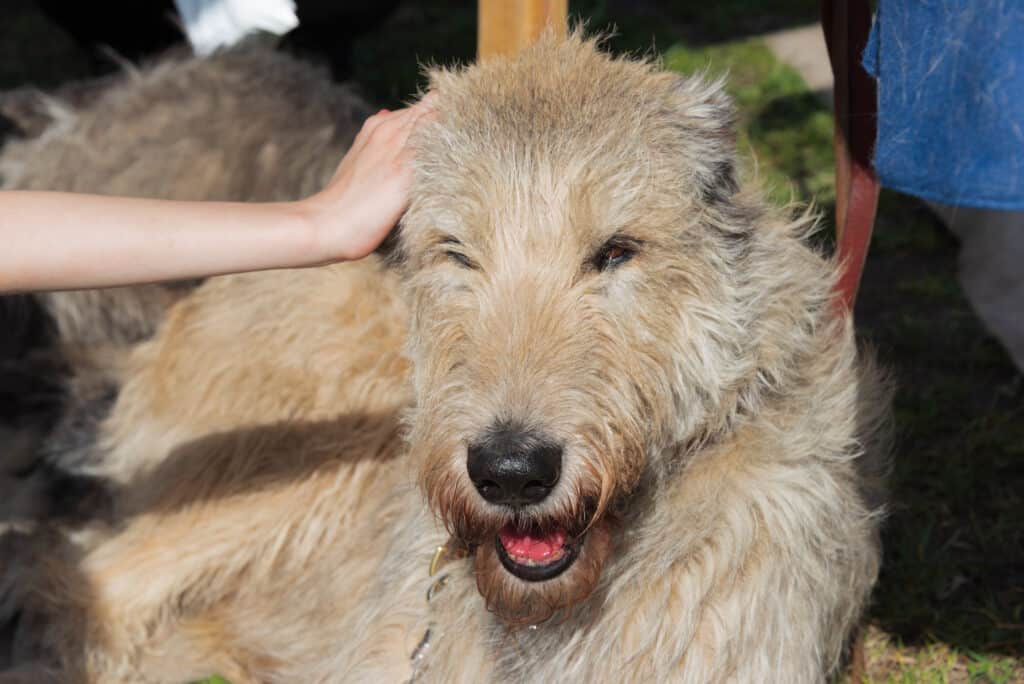
The Irish wolfhound makes a friendly and loyal companion animal.
©iStock.com/Shumoff
Today Irish wolfhounds can be seen in households as companion animals, on the TV screen at dog shows, or in nature by a hunter’s side. The American Kennel Club ranks the Irish wolfhound as 85 of 284 dog breeds for popularity as a pet. They are friendly with children, playful, and relatively easy to train. In dog shows, the Irish wolfhound belongs to the Hound Group. In 1985, an Irish wolfhound won the Hound Group competition at the Westminster Kennel Club Dog Show, but they have never won best in show. Irish wolfhounds retain the characteristics that make them good hunting dogs and although the use of hunting dogs has declined greatly since World War II, this breed is still sometimes used for this purpose.
Ready to discover the top 10 cutest dog breeds in the entire world?
How about the fastest dogs, the largest dogs and those that are -- quite frankly -- just the kindest dogs on the planet? Each day, AZ Animals sends out lists just like this to our thousands of email subscribers. And the best part? It's FREE. Join today by entering your email below.
Thank you for reading! Have some feedback for us? Contact the AZ Animals editorial team.








